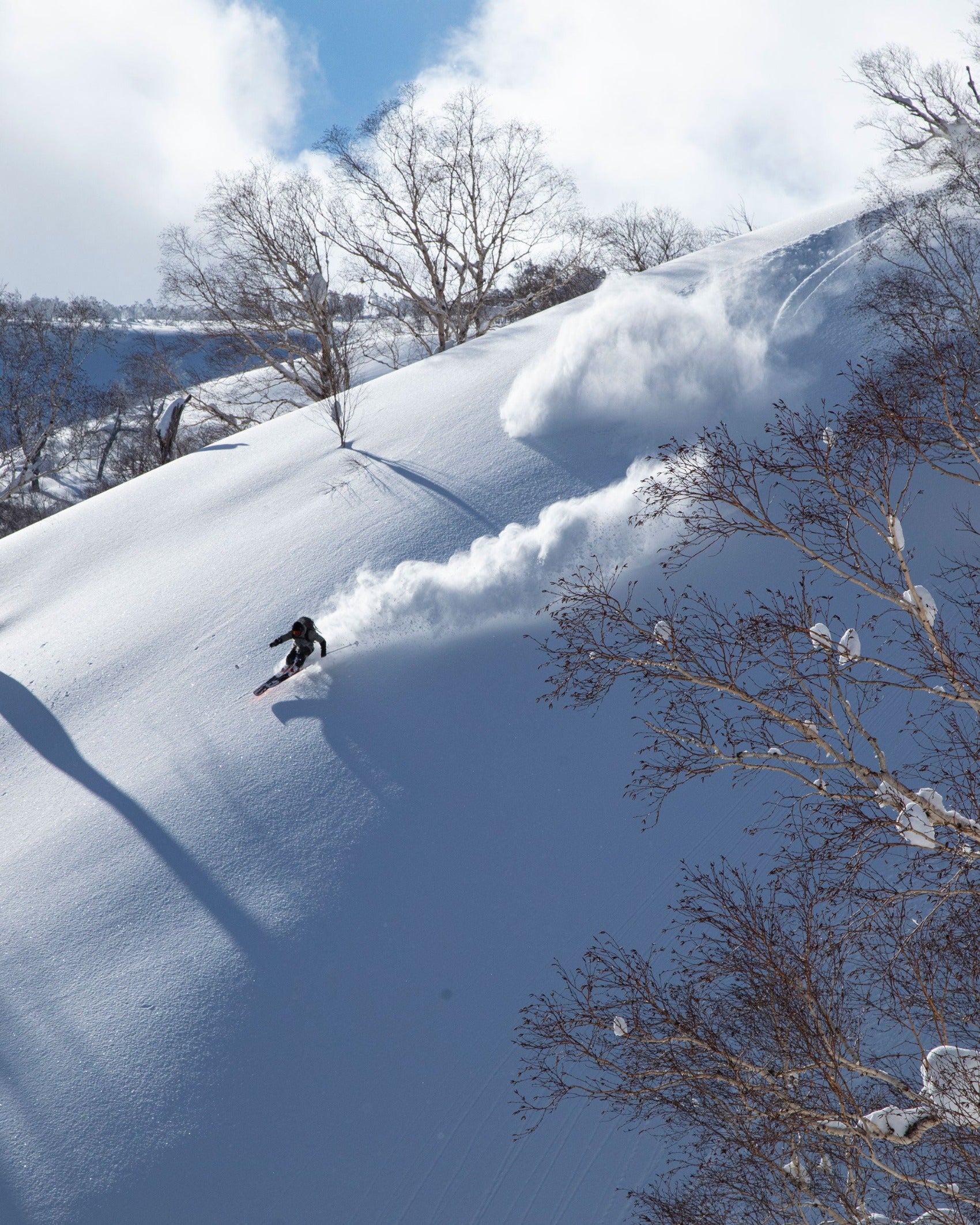How to Wax Your Skis at Home
Waxing your skis at home is a timeless and sacred tradition. It can signal the change of seasons from autumn to winter, or an upcoming snow cycle that has the makings for an epic week of shredding. And while it is a good excuse to crack a couple beers and hang in the garage, that pavlovian smell of ski wax cooking into your skis isn’t just nostalgic. Waxing and tuning your skis at home can save you some money and also increases the longevity and performance of your skis.
How Often Should You Wax Your Skis?
There is no doubt that once a year your skis should visit the ski shop for a proper tune and base grind. But, before you tag all those rocks during the first month of the season, getting your skis dialed in anticipation of the lifts spinning will aid in the enjoyment of those early season turns. Additionally, maintaining them after they do get tuned professionally may keep you off your ass when your skis are laid over on ice, or help you glide ahead of the pack on the traverse. Ideally, if you don’t smash into a boulder field on a continuous basis you can pretty much get away with one grind a year from a shop while waxing and tuning your skis at home.
The frequency regarding how often you should wax your skis depends on how much skiing you’ve been doing and the conditions. If your skis are running slow, look a little furry on the edges, or your edges aren’t biting on hard snow chances are you need a refresh. Furthermore, if you’re a backcountry skier, the multiple laps and application/removal of climbing skins can dry out a ski much more quickly, resulting in slower running skis and skin glue left on your bases.
Tuning Your Skis On Your Own
Below we discuss how to tune your skis at home. It doesn’t have to be costly - though investing in a couple pieces of ski tuning equipment helps in the long run, nor does it need to be an elaborate process… We’re freeskiers not World Cup downhillers seeking microseconds of glide. It just has to be quick and painless, just as the legend Doug Coombs stated when he developed the Q+P which he developed while working as a ski tech at Jackson Hole’s Teton Village Sports.
Ski Tuning Equipment to Get Started
A basic at home ski wax kit should consist of some vices to clamp your skis onto. For edge work, a file-guide along with a file, diamond stone and gummy stone is ideal. Then for waxing you’ll need a ski wax iron—one that will not be used on clothes after, a ski wax scraper to scrape off excess wax when you’re done, and a finishing brush to buff it out.
How to Sharpen Ski Edges
If you’re skis are dull and you find that they aren’t gripping even the most benign slopes, then you’ll need to cut the edge again. A file works perfectly as a ski edge sharpener as it cuts the metal edge and reshapes it. Applying a file to your ski edge is useful if your skis are mega dull from last season and you need grip on the infamous early season white ribbon of death. It’s also helpful if you tagged a bunch of rocks and the edges are jagged and uneven.
Diamond Stones
Diamond Stones are perfect for maintaining the sharpness of your skis. Think of the file as the shaper, and the diamond stone as maintenance. Often times a diamond stone and gummy stone (see below) are all you need. The diamond cutting surfaces come in a variety of coarseness and should be used with a water/alcohol mixture to help lubricate the stone finish. If you’re maintaining your ski’s edge throughout the season, 400 grit works well for most situations, and avoids working through each grit progression.
Gummy Stones
Perhaps the most underutilized piece of ski tuning equipment. Gummy Stones remove burrs from hitting rocks and cleans up the ski edge after you re-shape it with the file. It is also super helpful to de-tune the tips and tails of skis—allowing the ski to drift across the fall-line without getting caught up, yet still allowing them to track while carving on groomers.
When doing ski edge work it’s important to make long smooth passes from the tip of the ski through the tail. Once you’re finished with them, then it’s time for ski wax. You’ll probably need another beer at this point too…
Photo: Sam Waston
How to Choose Ski Wax
Choosing ski wax and temperatures is a bit of crapshoot because it’s all based on the weather, and we all know weather forecasts change drastically in the mountains. Furthermore, if you put ski wax that is meant for super cold days and it’s 32 degrees F and sunny you will not be gliding that well. So in lieu of always waxing your skis with different temperature wax you can mix some loosely together—remember that Coombs video… or just use a ski wax that has a high range of temperature.
Use The Best All Temperature Ski Wax
This season 4FRNT Skis is collaborating with Mountain Flow EcoWax for a custom all temperature (8F to 30F) ski wax. Mountain Flow EcoWax uses plant-based ingredients rather than petroleum and PFOAS to produce a wax that performs equally if not better in some scenarios. Traditional ski wax has notoriously been harmful in its production, application, and for the environment. Fortunately brands like Mountain Flow EcoWax have been transforming the industry, and are providing ski wax that not only helps the planet, but has the same performance of the all the nasty chemicals. They also sell a plant-based skin wax spray and glop stopper block to rub on your climbing skin during the spring, so you can fully transition from petroleum-based ski wax products when out in the backcountry.
The Process for Waxing Skis at Home
To wax your skis, set the iron to the appropriate setting for the wax—most ski waxes will tell you which temperature the iron should be set at, this prevents the wax from burning. Drip some wax from tip to tail while holding the bar of wax against the hot iron, then cook it in by moving in small circles and up and down the ski from tip to tail. Repeat for the next ski. Once they have both cooled, you’ll then scrape off the excess wax—again moving from tip to tail, and then finish with a brush.
Tuning your skis at home is a fun way to take ownership in your skis. Once your home ski tuning kit is set up, it’s much cheaper to maintain your skis and you’ll find it’s nice to quickly wax your boards so they stay running fresh and fast throughout the season.
Below is a video a demonstrating how to wax and tune your skis at home.
KEEP LEARNING 👇




